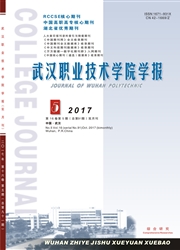

 中文摘要:
中文摘要:
选用综合经济实力、基础设施服务、社会事业与人力资源这3个一级指标以及GDP、人均邮电业务量、科技事业支出等25个二级指标,建立城市竞争力的测度模型,结合因子分析法和聚类分析法,计算了2013年湖北省12个地级市的城市竞争力。结果表明湖北省的城市发展不均衡现象明显,同时对2010年-2013年的数据进行纵向分析,发现湖北省12个地级市近四年的城市竞争力呈现出整体平稳并缓慢上升的趋势。湖北省城市发展,一是要增强武汉区域辐射能力,二是要加快武汉城市圈内发展,三是宜昌、襄阳要打造湖北省城市发展的新两极。
 英文摘要:
英文摘要:
This paper chooses the two indicators of comprehensive economic strength, infrastructure service, social undertakings and human resources, as well as 25 secondary indicators such as GDP, per capita postal service volume and science and technology expenditure, and establishes the measure model of urban competitiveness, combined with factor analysis and clustering analysis, calculated the urban competitiveness of12 prefecture-level cities in Hubei Province in 2013. The results show that the urban development imbalance in Hubei Province is obvious, and the data of2010 - 2013 are analyzed. It is found that the urban competitiveness of 12 cities in Hubei province has a trend ofsteady and slow rise in the past four years. Urban development in Hubei province should enhance the regional radiation capacity in Wuhan, should accelerate the development of Wuhan city circle, and should build Yichang and Xiangyang to become the new city of Hubei province, the development of the new pole.
 同期刊论文项目
同期刊论文项目
 同项目期刊论文
同项目期刊论文
 期刊信息
期刊信息
